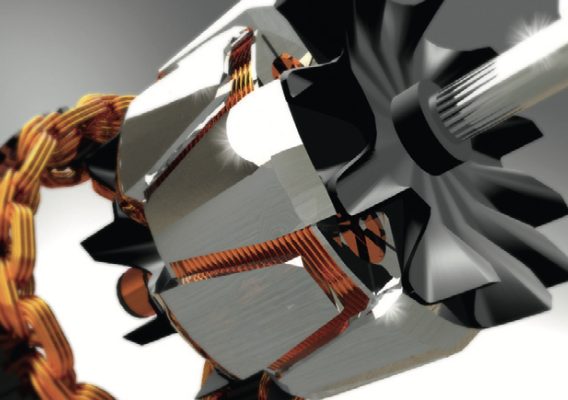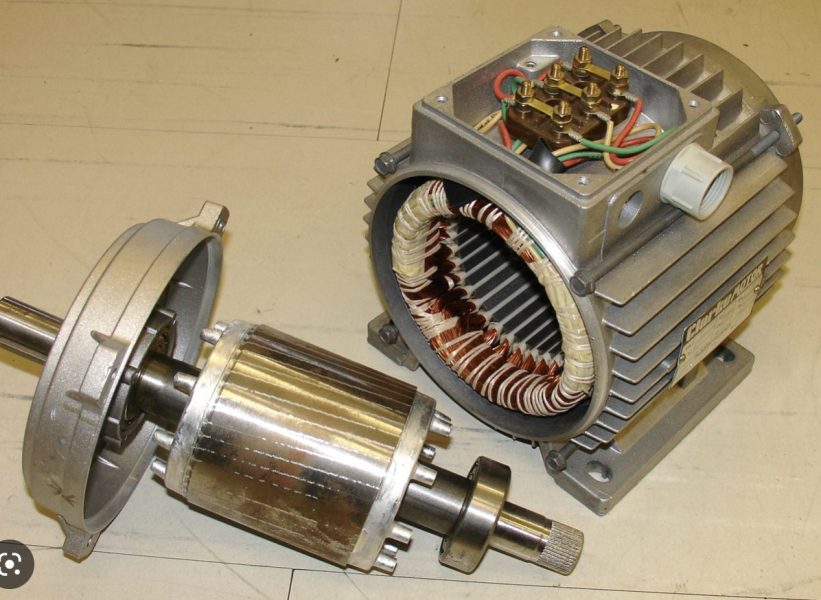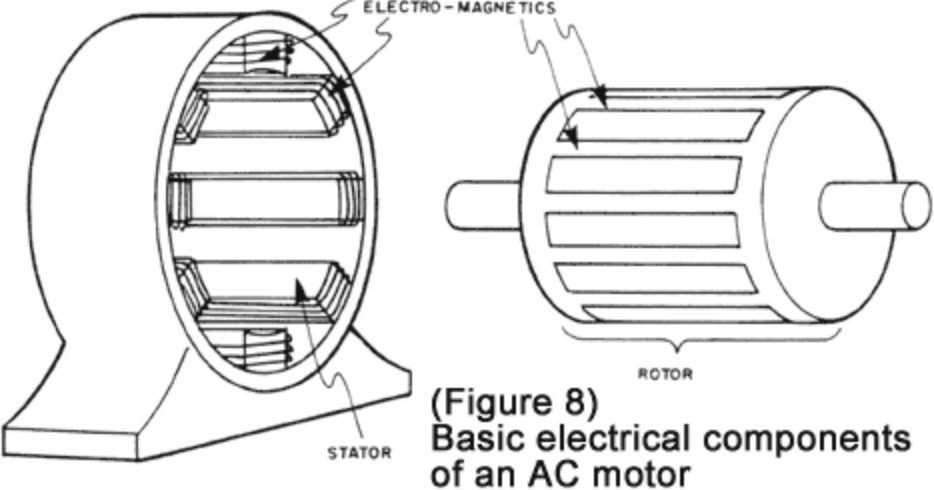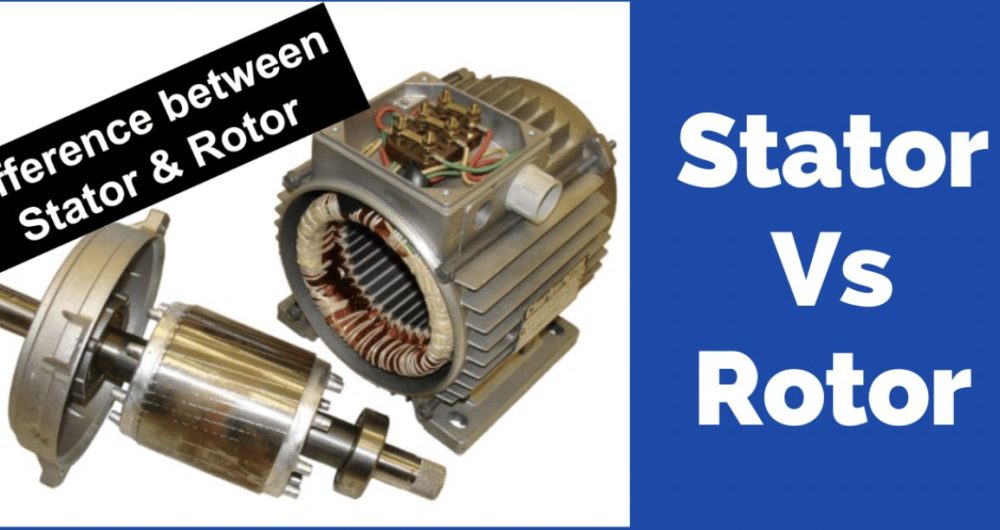Electric motors are found in a wide range of applications, from household appliances to industrial machinery. These motors consist of two main components: the stator and rotor. The stator is the stationary part of the motor, while the rotor is the rotating part. In this blog, we will take a closer look at these components and how they work together to make an electric motor function.
What is a Stator?
The stator is the stationary part of an electric motor. It is typically made up of a series of copper coils wound around an iron core. When an electric current is passed through these coils, it creates a magnetic field. This magnetic field is what interacts with the rotor to produce movement.

The stator’s coils are arranged in a specific pattern to ensure that the magnetic field they produce is uniform and strong. This arrangement is known as the winding pattern, and it can vary depending on the type of motor.
The stator’s primary function is to produce the magnetic field that interacts with the rotor to produce movement. However, it also serves to protect the rotor and provide support for the bearings that hold the rotor in place.
What is a Rotor?
The rotor is the rotating part of an electric motor. It typically consists of a series of conductive bars or wires that are connected to a central shaft. When the stator’s magnetic field interacts with the rotor, it creates a force that causes the rotor to turn.

There are several types of rotors, including squirrel cage rotors, wound rotors, and permanent magnet rotors. Squirrel cage rotors are the most common and are used in most industrial and household applications. They are made up of a series of conductive bars that are arranged in a cylindrical shape and connected by shorting rings at either end.
Wound rotors, on the other hand, are made up of a series of coils that are connected to slip rings. These slip rings allow an external circuit to be connected to the rotor, which can be used to control the motor’s speed and torque.
Permanent magnet rotors are made up of a series of magnets that are attached to the rotor. When the stator’s magnetic field interacts with these magnets, it creates a force that causes the rotor to turn.
How do the Stator and Rotor Work Together?
The stator and rotor work together to produce the movement necessary for an electric motor to function. When an electric current is passed through the stator’s coils, it creates a magnetic field. This magnetic field then interacts with the rotor, creating a force that causes the rotor to turn.
The direction and strength of the magnetic field can be controlled by varying the current passing through the stator’s coils. This allows for precise control over the motor’s speed and torque.

In summary, the stator and rotor are essential components of an electric motor. The stator produces the magnetic field that interacts with the rotor to produce movement, while the rotor rotates in response to this magnetic field. Understanding how these components work together is crucial for understanding how electric motors function and how they can be controlled.
As I mentioned earlier, the stator and rotor are the two primary components of an electric motor. The stator is a stationary component that consists of a set of copper coils that are wound around an iron core. These coils are connected to an external power supply, which causes an electric current to flow through them.
When an electric current flows through the stator’s coils, it creates a magnetic field. The direction and strength of this magnetic field depend on the direction and magnitude of the electric current. The stator’s winding pattern is designed to produce a uniform and strong magnetic field that interacts with the rotor.
The rotor is a rotating component that is typically made up of a set of conductive bars or wires that are connected to a central shaft. When the stator’s magnetic field interacts with the rotor, it creates a force that causes the rotor to turn. This turning motion is what produces the mechanical energy that is used to power machines and devices.
The direction and speed of the rotor’s rotation depend on the direction and strength of the magnetic field produced by the stator. By varying the electric current passing through the stator’s coils, it is possible to control the direction and speed of the rotor’s rotation. This makes electric motors very versatile and useful in a wide range of applications.
There are several different types of electric motors, each with its own unique stator and rotor configuration. For example, some motors use permanent magnets in the rotor, while others use wound rotors with slip rings. The choice of motor type depends on the specific application and the required performance characteristics.
In summary, the stator and rotor are essential components of electric motors that work together to produce mechanical energy from electrical energy. By controlling the electric current passing through the stator’s coils, it is possible to control the direction and speed of the rotor’s rotation. This makes electric motors highly versatile and useful in a wide range of applications, from household appliances to industrial machinery.
Advantages:
- High efficiency: Electric motors are highly efficient at converting electrical energy into mechanical energy, with efficiency rates ranging from 70% to over 95%.
- Low maintenance: Compared to other types of motors, electric motors require relatively low maintenance because they have fewer moving parts and don’t require regular oil changes.
- Quiet operation: Electric motors are much quieter than internal combustion engines, making them ideal for use in environments where noise levels need to be kept low.
- Precise control: Electric motors can be controlled with great precision, making them suitable for use in applications where precise speed and torque control are required.
- Environmentally friendly: Electric motors are more environmentally friendly than internal combustion engines because they produce no exhaust emissions and have a lower carbon footprint.

Disadvantages:
- High initial cost: Electric motors can be more expensive to purchase and install than other types of motors, which can be a barrier to adoption in some applications.
- Limited power output: While electric motors can be very efficient, they typically have lower power outputs than internal combustion engines, which can limit their usefulness in some applications.
- Dependence on electricity: Electric motors require a source of electricity to operate, which can be a limitation in remote locations or during power outages.
- Heat generation: Electric motors can generate heat during operation, which can be a concern in some applications where heat buildup can be a problem.
- Complexity: Electric motors are more complex than other types of motors, with multiple components and control systems that require expertise to design and maintain.
Overall, the advantages of electric motors, such as high efficiency, low maintenance, and precise control, make them ideal for many applications. However, their higher initial cost and dependence on electricity can be limiting factors, and they may not be suitable for all applications.




